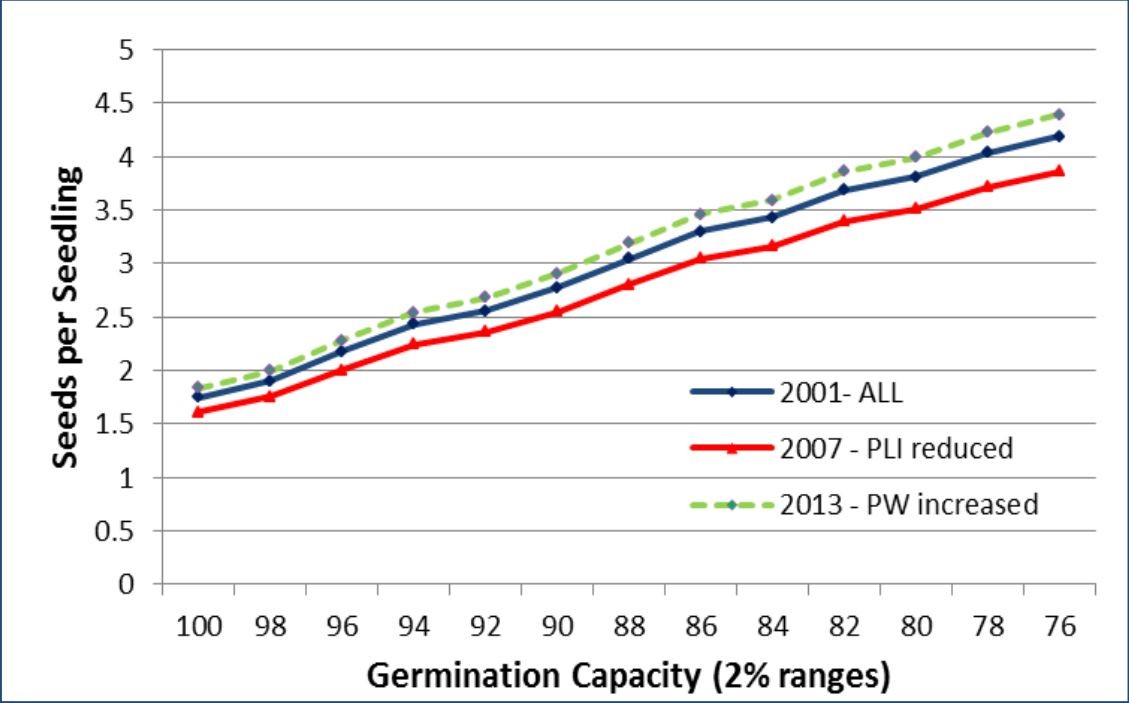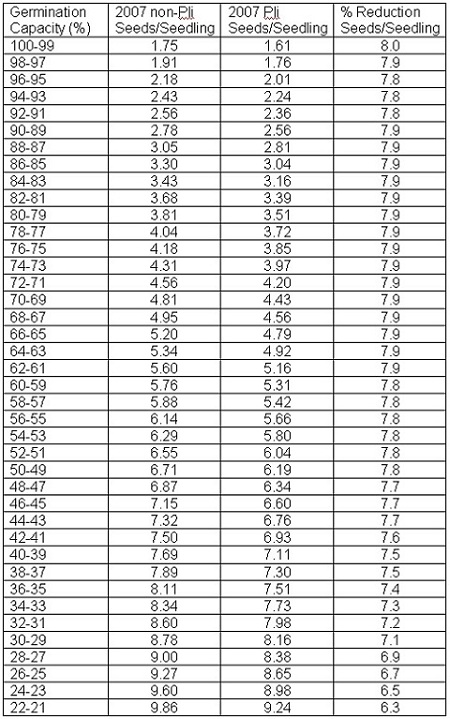Sowing guidelines
The sowing guidelines are a set of calculations that convert the amount of seedlings requested by forest professionals to the quantity of seed that needs to be removed from long-term freezer storage for a seedling request.
These calculations use a default conversion factor in the Seed Planning and Registry (SPAR) to determine the of potential seedlings for an entire seedlot and the number of seedlings that can be produced per gram of seed.
As the calculations are based on seed use cross all forestry nurseries, some nurseries adjust the grams of seed required (usually downwards) based on experience or limitations placed on high-value seed by the owner.
Nursery Grams Adjustment Screen
To help nurseries be more efficient with seed, there is a Nursery Grams Adjustment Screen under the “Request” tab in SPAR. There, clients can now select sowing requests based on
- Request agency (client)
- Species
- Stock type
- Container type
- Planting year/season
- Stock age
You can bring these up on a common screen where you can adjust gram quantity.
The 2013 guidelines are illustrated in Figure 1 for germination capacity (GC) values between 70 and 100% (covering most Pli seedlots).
- The changes in this version of the guidelines have been realized by reducing the correction or oversow factor by 0.1.
- This factor is entered to two decimal places and allows for a streamlined reduction in seeds per seedling across the germination range.
- The 2007 Pli guidelines do not provide specific sowing factor or correction factor terms. These small reductions in seed are best implemented by each nursery with consideration to their sowing equipment and attitude to risk.
- In 2013, an adjustment for Pw seed was introduced in which increased seed supplied by 5%.

Figure 1. A comparison of seeds per seedling supplied through the 2007 Pli guidelines and 2007 non-Pli guidelines (=2001 guidelines) from 69 to 100% germination capacity.
To compare seeds supplied per seedling, at 99% and 100% germination capacity, the term is reduced from 1.75 to 1.61 while at 69 and 70% GG the seeds per seedling goes from 4.81 to 4.43. A comparison of the changes in seeds per seedling for germination capacity values between 100 and 21% (the lowest germination capacity value in the guidelines) are illustrated in Table 1. The seeds per seedling number is important as it is the value used in the calculations converting seeds to seedling and vice versa.
Equations:
- Grams of seed = (Number of Seedlings Requested x Seeds Supplied per Seedling) / (Seeds per gram)
- Potential Seedlings = (Grams of Seed x Seeds per gram) / (Seeds Supplied per Seedling)
Table 1. A comparison of the seeds supplied per seedling and % reduction of the 2007 Pli guidelines and 2007 guidelines for other species.

Dave Kolotelo - Susan Zedel - Al McDonald
